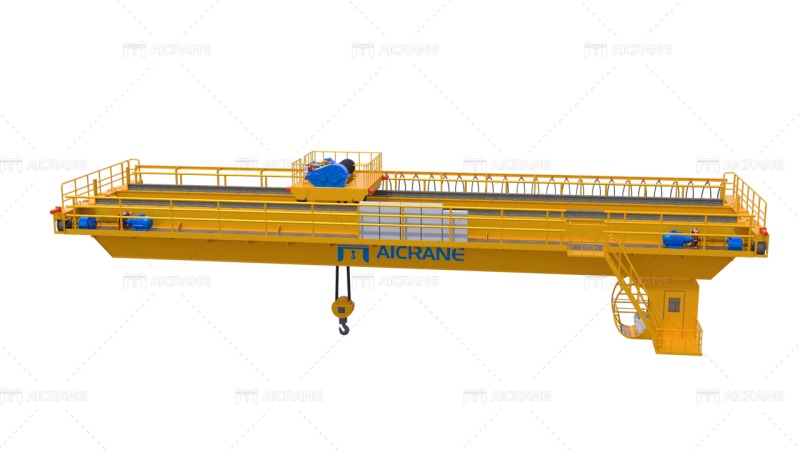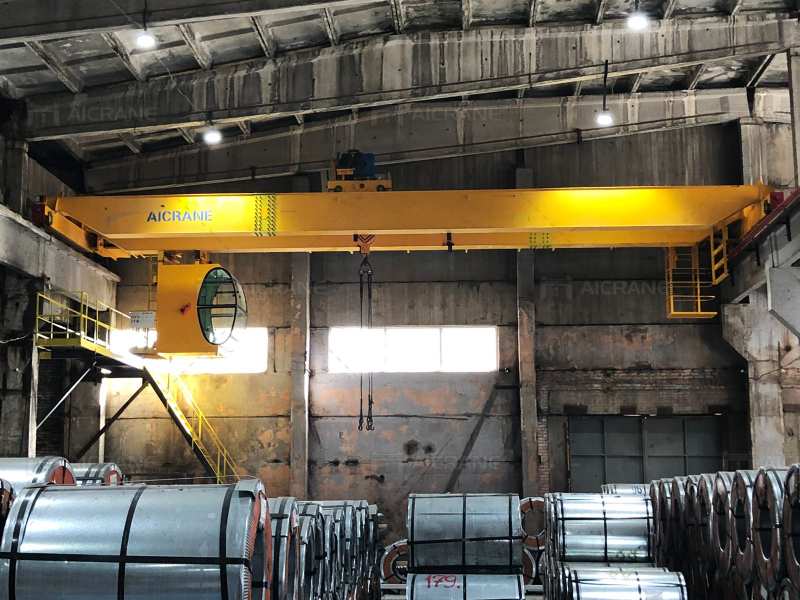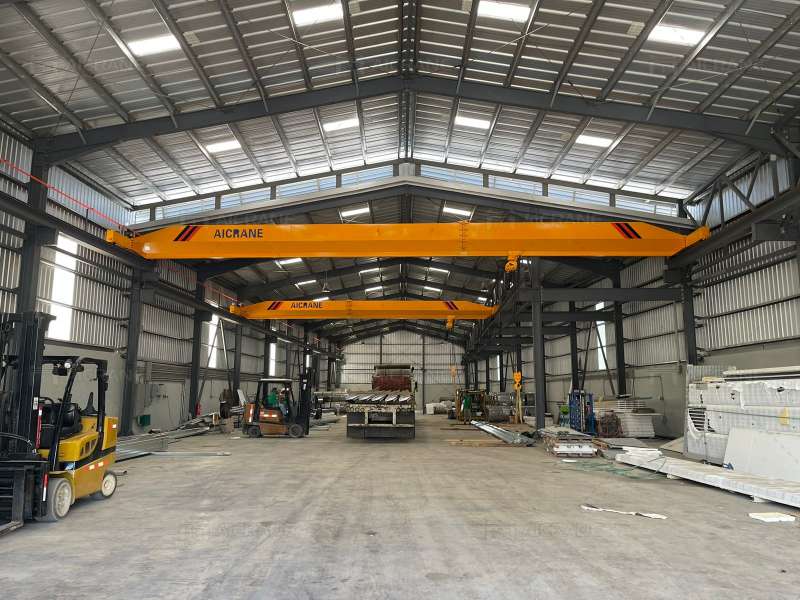When purchasing an overhead crane for your facility, one of the most important considerations is the price. Overhead cranes are a significant investment, and understanding the factors that influence their pricing can help you make an informed decision. This guide will explore how to navigate overhead crane price lists, comparing options such as single girder overhead crane price, double girder overhead crane price, and top running bridge cranes, to help you find the best value for your needs.

Understanding the Types of Overhead Cranes
Before delving into the details of crane pricing, it’s essential to understand the various types of overhead cranes available. Each type offers different features, capacities, and benefits, which can affect their price.
- Single Girder Overhead Cranes: Single girder cranes are typically used for lighter loads and smaller applications. They consist of a single main beam (the girder) supported by end trucks that move along the runway. Due to their simpler design, single girder cranes are often more affordable than double girder cranes. These cranes are ideal for lifting lighter loads and are commonly used in warehouses, light manufacturing, and maintenance tasks.
- Double Girder Overhead Cranes: As the name suggests, double girder overhead cranes have two main girders, offering enhanced strength and stability. These cranes are designed for heavy-duty lifting and can handle larger loads and more demanding applications. Double girder overhead prices are more expensive than that of single girder cranes due to their more complex design and higher lifting capacity. They are commonly used in steel mills, heavy manufacturing, and large-scale industrial operations.
- Top Running Bridge Cranes: Top running bridge cranes feature a bridge that runs along a track mounted at the top of the building. These cranes are known for their ability to cover large areas and handle heavy loads. They are more versatile than under-running cranes, which are mounted on the floor of the building. Top running bridge cranes are suitable for a wide range of industrial applications, including material handling in large factories and warehouses.

Factors That Influence Overhead Crane Pricing
Overhead crane prices can vary significantly based on several factors, including the type of crane, its capacity, features, and the manufacturer. Understanding these factors will help you better navigate crane price lists and find the most cost-effective solution for your business.
1. Crane Type
The type of crane you choose will have the most significant impact on the price. As mentioned, single girder overhead cranes are typically less expensive than double girder cranes, but they are limited in terms of capacity and versatility. If your facility requires heavy-duty lifting and more robust performance, investing in a double girder overhead crane may be the better option despite the higher initial cost.
Top running bridge cranes are generally priced higher than both single and double girder cranes, primarily due to their design, capacity, and ability to cover larger work areas. These cranes are ideal for large-scale operations and those that require maximum lifting capabilities.
2. Load Capacity
Another critical factor in determining the price of overhead cranes is the load capacity. Cranes are priced based on their ability to lift a certain weight, with more robust cranes capable of lifting heavier loads typically costing more. A single girder overhead crane, for example, may be capable of lifting loads ranging from 1 to 10 tons, while a double girder overhead crane can often handle 10 tons or more, sometimes up to 100 tons or beyond.
If you require a crane with a higher lifting capacity, be prepared to pay more for the equipment. When comparing crane price lists, always make sure the crane’s load capacity aligns with your specific operational needs to avoid overpaying for unnecessary features.
3. Span and Lift Height
The span of the crane is the distance between the two end trucks, while the lift height refers to the maximum height at which the crane can lift loads. Both of these factors will influence the price of an overhead crane. For example, a top running bridge crane with a large span and lift height will naturally be priced higher than a smaller crane with a shorter span and lift height.
It’s essential to evaluate your facility’s layout and determine the necessary span and lift height required for your operations. If your building has limited space, you may need a crane with a shorter span, which will be less expensive.
4. Customization and Additional Features
Overhead cranes can come with various additional features that may impact the price. These features could include:
- Remote Control Systems: Modern overhead cranes often come equipped with wireless remote controls for enhanced operator safety and convenience. This added functionality will increase the overall price of the crane.
- Automation and Smart Technology: Cranes equipped with automated systems and sensors for load tracking, positioning, and optimization tend to be priced higher than manual systems. These features can improve operational efficiency and reduce human error but come at a premium.
- Environmental Considerations: If your facility operates in harsh conditions, such as high-temperature environments or corrosive settings, you may need to invest in a crane with specialized coatings or materials. This can add to the overall cost of the crane.
5. Brand and Manufacturer
The brand and reputation of the crane manufacturer can also affect the price. Well-known manufacturers such as Konecranes, Demag, and Terex often command higher prices due to their reliability, customer service, and extensive product support. While lesser-known brands may offer lower prices, it’s essential to consider factors such as warranty, after-sales service, and the quality of the crane before making a decision.
When comparing overhead crane price lists, it’s always a good idea to read reviews and gather information about the manufacturer’s track record to ensure you’re investing in reliable equipment.

Understanding Price Lists for Different Crane Types
- Single Girder Overhead Crane Price: Single girder crane prices typically range from $10,000 to $50,000, depending on their capacity and features. These cranes are cost-effective options for small to medium-sized operations that don’t require heavy-duty lifting.
- Double Girder Overhead Crane Price: Double girder cranes are more expensive, ranging from $50,000 to $200,000 or more, depending on the lifting capacity and additional features. These cranes are ideal for larger operations that require higher load capacities and more robust performance.
- Top Running Bridge Crane Price: Top running bridge cranes are the most expensive of the three, with prices ranging from $75,000 to $500,000 or more, depending on the span, capacity, and customization. These cranes are best suited for large-scale industrial applications requiring extensive coverage and heavy lifting.
Conclusion: Choosing the Right Crane for Your Needs
Navigating overhead crane price lists can be overwhelming, especially when there are so many variables to consider. By understanding the factors that influence pricing—such as crane type, load capacity, span, lift height, and additional features—you can make a more informed decision. Whether you’re looking for a budget-friendly single girder overhead crane, a heavy-duty double girder crane, or a versatile top running bridge crane, it’s crucial to select a crane that matches both your operational requirements and budget.
Remember to compare quotes from different manufacturers, consider the total cost of ownership, and invest in a crane that will provide reliable performance, durability, and safety. By doing so, you can secure the best deal on an overhead crane that enhances your facility’s productivity and efficiency.